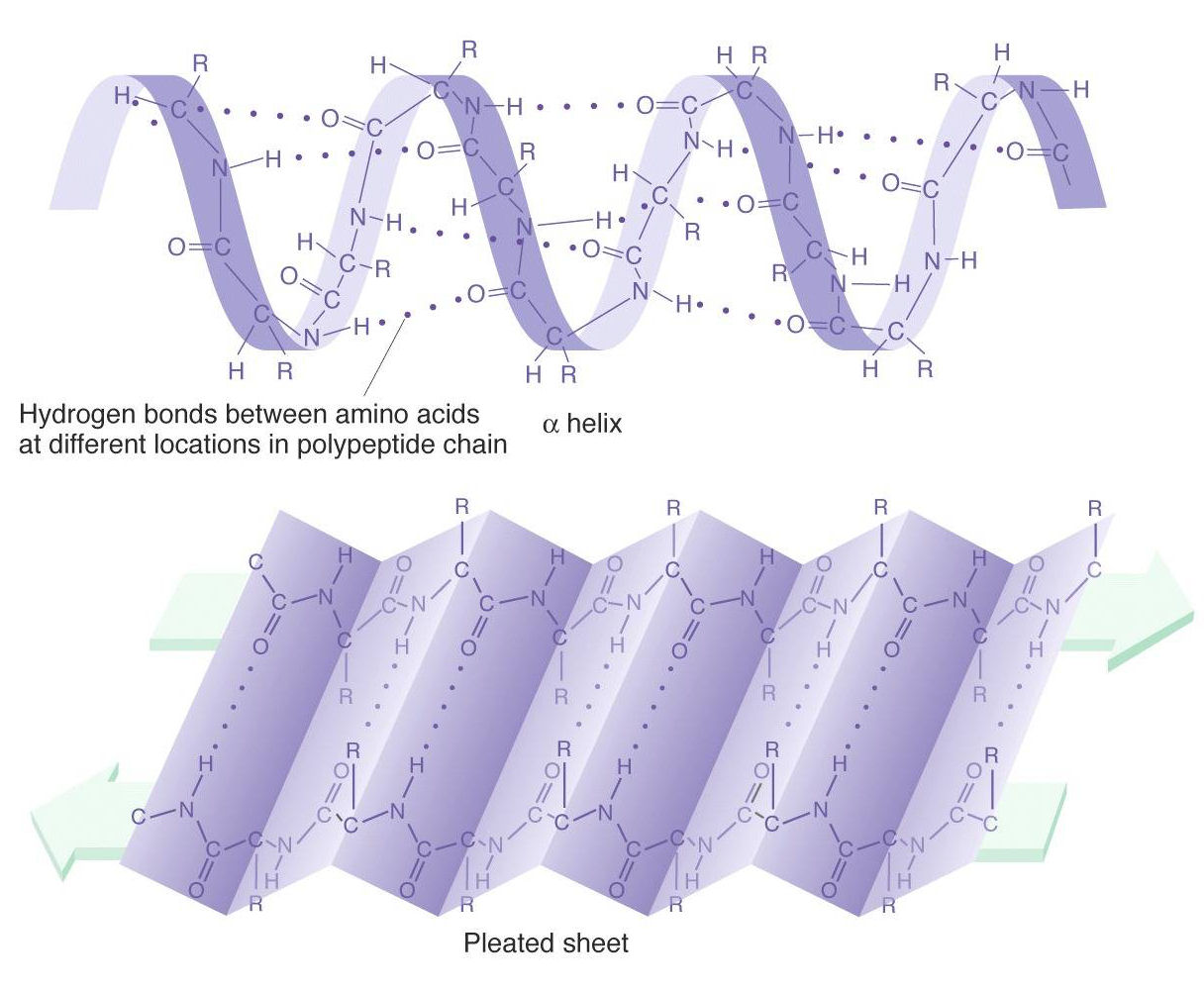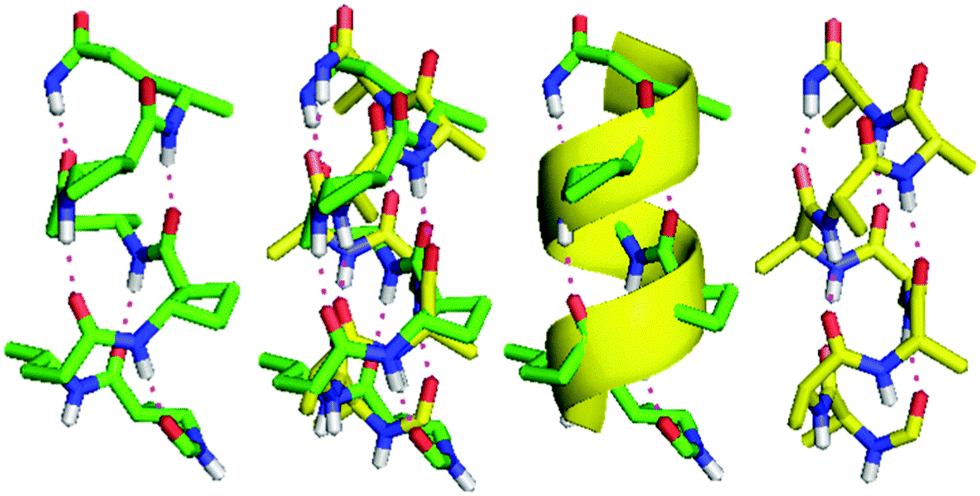

Here we have another hydrogen bond that's forming in this Alfa helix. So this pink line that's being highlighted in green here is essentially showing the hydrogen bond that forms and so Essentially, what you'll also note is that the amino group will vice versa hydrogen bond to the Carbonnel group of a residue X minus four away.
#Peptide backbone of alpha helix plus#
And so, essentially, what you'll notice is that the way that the hydrogen bonding works is that the Carbonnel group of an amino acid residue will hydrogen bond to the amino group of a residue X plus four away.
#Peptide backbone of alpha helix free#
Amino, uh, is the amino terminal with the free amino group, and the right side is the C terminal with a free car box elite group. Over here is the amino group with the ferry. So notice in this example, what we have is a hex of peptide or a peptide with six amino acid residues, and we know that it has six residues because it has a total of six different are groups throughout our peptide, and so essentially, what you'll notice is the left side. And we'll be able to understand how that works a little bit better down below in our example of Alfa Helix hydrogen bonding. Therefore, that means that the both the first and the last four amino acid residues oven Alfa Helix will not fully participate in Alfa Helix hydrogen bonding. And so because Alfa Helix hydrogen bonding works in this fashion, that we described up above. And so the end in the amino group can remind you of the negative sign in the X minus four here to distinguish, uh, the X Plus four in the car bottle group from the X minus four with the Amino Group.


Well, hydrogen bond to the residue that is X minus four away towards the end terminal end. And so, essentially, What we're saying here is that the Carbonnel group of an amino acid residue in an Alfa helix well hydrogen bond to the amino group of a residue X plus four away towards the C terminal, and and the amino group of an amino acid residue, which we know has a nitrogen atom in it.

And and this also applies for the amino groups where the amino group of an amino acid residue in an alfa helix will hydrogen bond to the Carbonnel Group of a residue X minus four away towards the end terminal end of the peptide. And so another way to say that same thing is that the Carbonnel Group of Residue X will hydrogen bond to the amino group of Residue X plus four away towards the C terminal. Now these next two bullet points here are dedicated to telling us how Alfa he looks, hydrogen bonding works and the way that it works is that a carbonnel group of an amino acid residue in an Alfa helix well hydrogen bond to the amino group that is four residues away towards the C terminal end of the peptide. And so this bullet point here applies not only toe Alfa Ulysses, but also to other secondary structures as well, such as beta sheets, which we'll talk about later in our course. And so what this means is that the are groups of amino acids are not involved with the hydrogen bonding that stabilizes and Alfa Helix. And so these hydrogen bonds form between the amino and the Carbonnel groups in the peptide backbone. And there are not multiple poly peptide chains involved with stabilizing in Alfa Helix. What we mean by interchange is that these hydrogen bonds form within the same single poly peptide chain. So, as you guys already know, Alfa Ulysses are stabilized by interchange, hydrogen bonds and recall. In this video, we're going to talk about Alfa Helix hydrogen bonding.


 0 kommentar(er)
0 kommentar(er)
